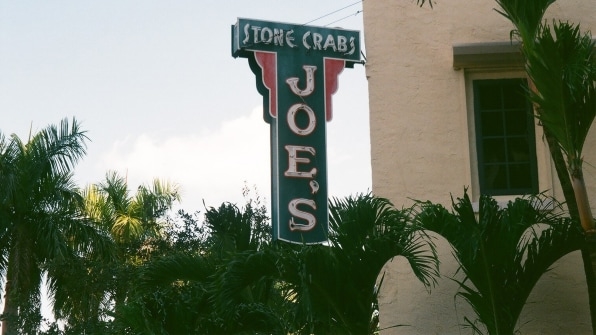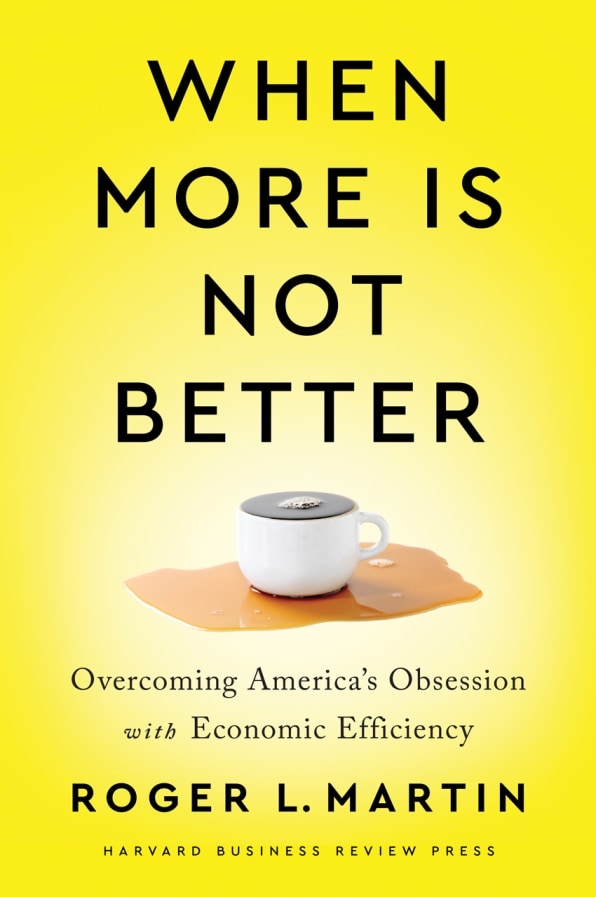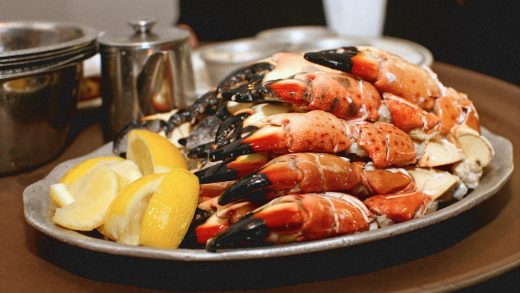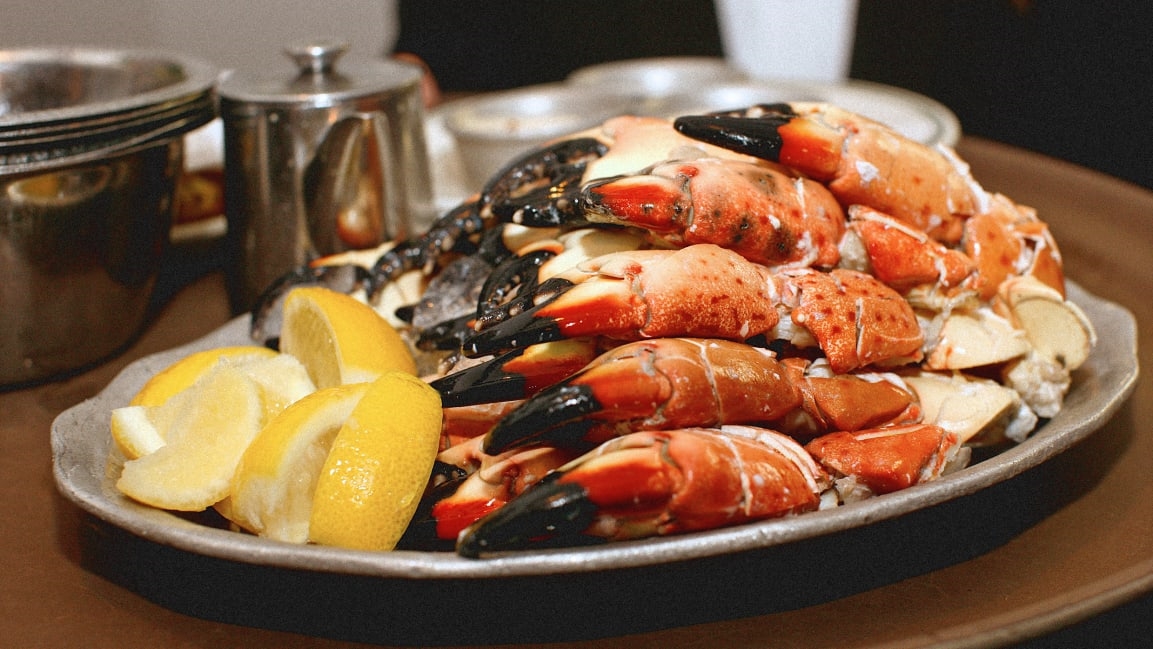What this 100-year-old restaurant can teach CEOs about balancing resilience and profit
Joe’s Stone Crab of Miami Beach is a rarity: an American restaurant that has prospered for over a century. It is currently the top-grossing independent restaurant in America—despite being the only restaurant in the top 100 that closes for three (and it used to be five) months per year when its principal fare, stone crab, is out of season. Its annual gross is 4% greater than that of the second-place competitor, but its monthly gross is 39% greater. In a trendy business sector in which the median age of the next 10 restaurants on the top 100 list is 27 years, its 100-year run of success is nothing short of astounding. The leading gross certainly suggests efficiency, while the longevity confirms resilience—a productive balance.
Our waitress, Joan, and the wine steward, Avi, were terrific. I couldn’t stop myself from asking: Okay, what is going on here? They loved their jobs and the restaurant and suggested that we talk to fourth-generation co-owner Stephen Sawitz.

So, several months later, my wife and I had the pleasure of meeting with Stephen, a tall and affable 61-year-old, and his redoubtable mother, Jo Ann Bass.
Perhaps because he was born into the business, Stephen was incapable of dividing it into silos. Employees, purveyors, customers, and community were all present in his and his mother’s minds as they spoke about their business. It was a systemic approach. For employees, Joe’s had to make it a productive and rewarding life. Take J.T., the maître d’, who had been at Joe’s since 1971—48 years and counting—and who was one of the three members of the waitstaff that Stephen invited to join our conversation. J.T. had come from “a swamp in Louisiana” and had had an acquaintance provide an introduction to Joe’s that netted him a job as a pot washer. After a couple years, he became a busboy, and after 19 more years, he became a dining-room. Holding back tears, he credited Jo Ann for having bet on him and supported his promotion nearly three decades earlier. After another 12 years, he became the maître d’ for America’s highest-grossing restaurant, and he is still in that position 15 productive years later.
J.T.’s story is neither new nor unique for Joe’s. Joe Weiss, the founder, used to drive his workers home after work, because in his era, African Americans weren’t allowed on Miami Beach after sunset, and Joe didn’t want it to be impossible for African Americans to work at his restaurant. In the 1970s, Joe’s offered health insurance, pensions, and profit sharing for workers, long before those were common benefits in industry in general, let alone in the laggard restaurant industry. Everybody received an end-of-year bonus. In an industry with 75% annual turnover, Joe’s hourly employees stay an average of 10 years and its overall staff an average of 15 years. No wonder we had such a wonderful customer experience.
But the system can’t work for employees only. It has to work for suppliers too—”purveyors,” as Stephen refers to them, using the industry’s term. Joe’s business is founded on stone crabs, a delicacy that Stephen’s great-grandfather and great-grandmother introduced to the dining public. Joe’s is by far the biggest purchaser of stone crabs in the country. It operates stone-crab fisheries itself and in addition purchases large quantities of stone crabs from independent fisheries. When we talked about the purveyors, the response was truly systemic. It wasn’t just about the current fishermen and women. “We want our fishermen to be the best paid,” Joe said, “so their sons and daughters will want to become our fishermen.”
This is not narrow reductionism: It is expansiveness. It balances a traditional separation, in which most companies are transactional in their supplier relationships, with a connectedness that acknowledges the interdependence between Joe’s system and that of the fishermen supplying Joe’s.
Then there are the customers. They can’t all afford stone-crab claws, which are an expensive entrée. A medium portion is on the menu at $44.95, a large at $69.95. Claw entrées are the base of the business—for the most part, an innovation of Joe Wiess’s. Before him, nobody thought a stone-crab-claw entrée would be worth anything, let alone $45 to $70 a plate. But because of that high price, Joe’s insists on having an entrée for customers who want an affordable meal. And that is the fried half-chicken at $6.95—the second-most-purchased entrée after stone-crab claws.
Considered strictly, Joe’s pursues inefficiently high compensation for both employees and suppliers, inefficient use of space in the restaurant, and inefficient sale of low-price chicken entrees.”
The fried half-chicken is Jo Ann’s baby, and she staunchly and proudly refuses to raise the price despite the financial folks insisting to her that it loses the restaurant money with every order and imploring her to approve a price hike. “They say you don’t make any money, but you are,” she retorts. She knows that if Joe’s were to become an elite place featuring only $45–$70 entrées, it would be a different place, and not in a good way. The kids in the tank tops and the cops wouldn’t come—and it would be a lesser place for their absence. So, the $6.95 fried half-chicken is a crucial piece of Joe’s complex adaptive system.
The same thinking is evident in Stephen’s decision 25 years ago to change the restaurant layout by putting a large service bar where the original entrance used to be. The reaction internally was that the new bar was so big that it eliminated a number of dining tables, which would reduce revenues. Stephen’s reaction: “Exactly, and that is fine.” This is an important marker of non-reductionist thinking. Yes, the big bar might reduce the number of tables. But patrons at the main bar wouldn’t have bartenders juggling their orders with the drink orders for the tables (the primary function of the service bar). And it would help those waiters get drinks to their table patrons faster and with greater ease. Introducing a friction in the form of a table-cannibalizing bar may have made the restaurant appear less efficient at first blush, but in Stephen’s view the move was a no-brainer in the longer term, improving the guest experience and reducing the pressure on both his bartending and wait staff.
Stephen’s decision to change the longstanding entrance and add a service bar is part of a pattern at Joe’s: experimentation. As of a quarter-century ago or more, it was already obvious that Joe’s was a monumental success. A natural reaction would have been to stick with what made Joe’s successful. Instead, Stephen has kept on experimenting—whether with a new entrance and outsize service bar, an outdoor dining area, a takeout business, or a summer menu to shrink the summer closure from five months to three. These are thoughtful and reflective, though not traditional, tweaks to a complex adaptive system. Tweaks of this sort ensure that Joe’s does not fall prey to believing that it has achieved perfection but instead maintains a continued drive for improvement.
Perhaps most endearingly, the Joe’s Stone Crab business model is environmentally sustainable. Stone crabs are not killed in the process of harvesting and selling their claws. Depending on the size and sex of the crab, the fisherman can remove one or both of its claws. If the removal is done properly, the stone crab can be returned to the sea where it can survive and regrow its claw or claws. Joe’s can take credit for popularizing the only meat meal that doesn’t involve killing the animal involved.

Joe’s Stone Crab demonstrates that narrow reductionism and the rigid pursuit of proxies for efficiency are not requirements for business success. Considered strictly, Joe’s pursues inefficiently high compensation for both employees and suppliers, inefficient use of space in the restaurant, and inefficient sale of low-price chicken entrées. All that notwithstanding, Joe’s model has been proven monumentally effective for over a century, with no sign of slowing down. Despite all its apparent inefficiency, Joe’s has been financially successful at the highest level while benefiting its workers, suppliers, and community. Its model is consistent with operating a complex adaptive system, not a machine, and it achieves the balances that the system requires.
Joe’s outsize success—while that of only one, relatively small business—points to steps that every business executive in every business can take to contribute positively to the future of democratic capitalism rather than serve as a consistently mixed blessing.
Reprinted by permission of Harvard Business Review Press. Adapted from When More Is Not Better: Overcoming America’s Obsession with Economic Efficiency by Roger L. Martin. Copyright 2020 Roger L. Martin. All rights reserved.
(24)



